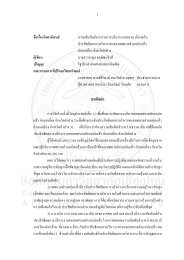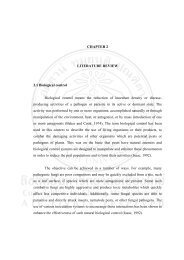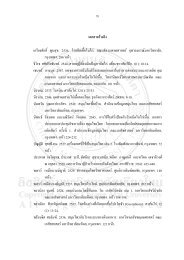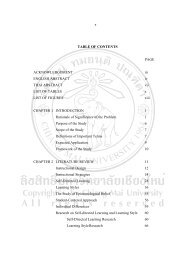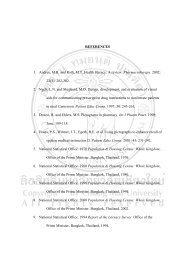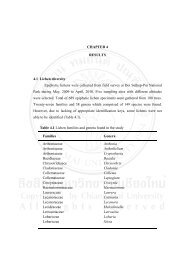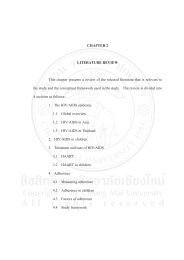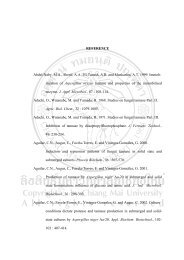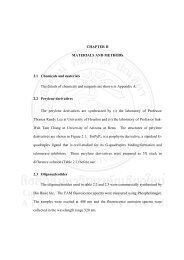Chapter Four
Chapter Four
Chapter Four
Create successful ePaper yourself
Turn your PDF publications into a flip-book with our unique Google optimized e-Paper software.
12<br />
Table 2.3 Principle functions of saprobic fungi in ecosystems (Modified from Tsui,<br />
1999 and Christensen, 1989).<br />
1. Decomposition of organic matter. This involves the volatilization of C, H and O, reduction in<br />
volume, fragmentation, increase in homogenecity, and assimilation by microbes and detritus<br />
feeders.<br />
2. Elemental release. The minaeralization of N, P, K, S and other ions from organic and inorganic<br />
materials commonly accompanies decomposition.<br />
3. Modification of soil permeability and promotion of aggregation.<br />
4. Modification of soil ionic exchange and water holding capacities.<br />
5. Detoxification of soil. This function is a derivatives of chemical or physical alternation e.g.,<br />
degradation, volatilization, or sequestering.<br />
6. Synthesis of humic substances.<br />
7. Participation in saprophytic food chains.<br />
8. Production of environmental biochemicals e.g., antibiotics, immunosuppressants.<br />
9. Cultivation for enzymes or food.<br />
10. Being the bioindicator of air pollution.<br />
2.3 Life Strategies of Saprobes<br />
Substrates for fungal growth may be living or non-living. Fungi can be divided<br />
into three categories according to their nutritional mode; parasitic, endophytic or<br />
saprobic. An important factor affecting the distribution and life-styles of fungi is their<br />
heterotrophy; all growth requires utilization of organic compounds (Cooke and<br />
Rayner, 1984). Different fungi vary widely in their ability to gain access to and utilize<br />
different carbon sources. This variation affects many aspects of their behavior, which<br />
includes their patterns of establishment in natural nutrient sources, their interrelationships<br />
with other organisms, and the types of material which they can occupy<br />
(Cooke and Rayner, 1984; Kendrick, 2000; Dix and Webster, 1995). Parasities are an<br />
organism living on or in, and obtaining its nutrients from, another living organism<br />
(Kirk et al., 2001), This category includes ‘pathogens’ - a parasite living in another




